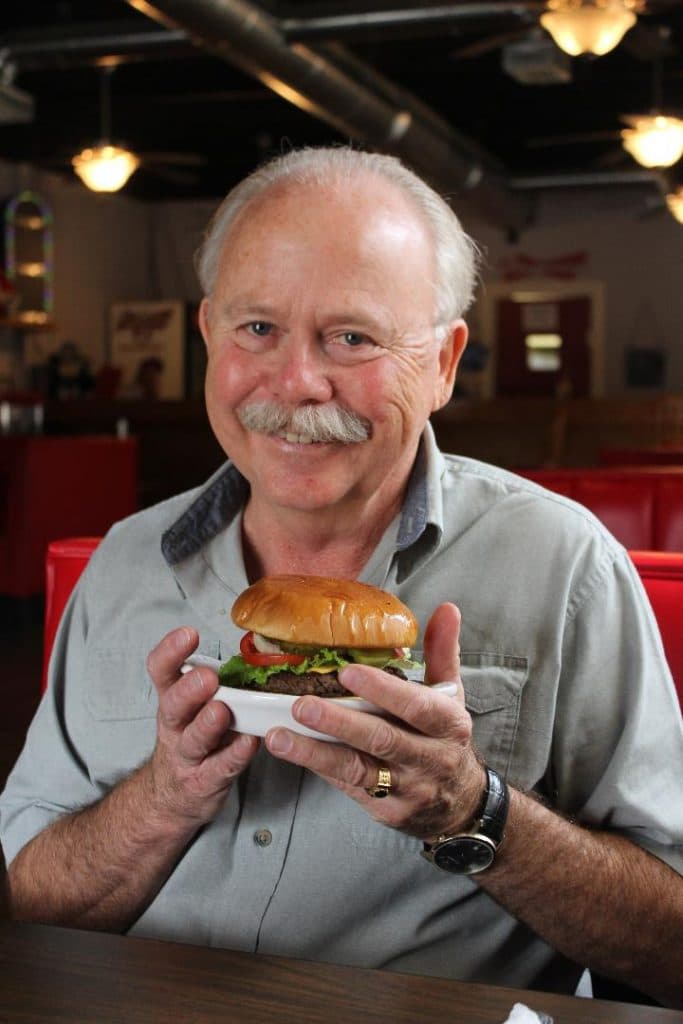The reason I am writing this story is to get your attention, and I can’t think of a better way to get folks excited (and commenting) than to make a bold statement, like “Charred in Ocean Springs has the best burgers in the county.” Do you disagree? If you have another favorite, I’d sure like to know about it!
I am a burger nut. If I go to a fine dining restaurant and they have a good-looking burger on the menu, that’s where I am going. Add good homemade (and twice fried) fries and aioli and I am in heaven. So, just what does it take to make a good burger and fries? There are only a few rules to this game, but they make all the difference.

The best fries hands down are twice fried. Cut the fries and keep them in ice water for 15 minutes or so. Heat your fryer to 280 degrees F, then fry in small batches from 6 to 8 minutes. Remove, and drain. Increase the heat to 375 degrees F, and fry again for 2-3 minutes, or until crispy. The first frying cooks the potatoes thru, the second makes them crisp and delicious. Salt and serve hot, please.
The best burgers are cooked on a chargrill, open wood or hardwood charcoal fire. Period. A pan-fried burger just isn’t the same, it’s just got to have flame induced char and smoke.
The burger itself should be the best quality beef, with a high-fat content (70/30 is best). If you are making burgers with lean beef, you are missing the point. Fat equals flavor. Again, period. Beef is graded by the USDA as select, choice and prime. If you have the big bucks and can afford Japanese wagyu, the grades run 1 thru 5 (poor, below average, average, good and excellent), and the very best is called Wagyu beef A5, the best of the best. The better the quality of the beef, the better the burger, but the most important part is the fat content.
Many of the best burgers today are made with a blend of beef and fat. Here are a few examples: 70% short rib and 30% shank, or 33% oxtail, 33% skirt steak and 33% brisket, or 25% hanger steak, 25% flank Steak, and 50% ribeye cap. Some chefs blend in bone marrow, ground sausage, pork fat, mushrooms, onion, fresh herbs or a variety of other good things. The point is that the beef you use to make your hamburger patties can be enhanced with additional fat or flavors. The only way to figure out what you like is to experiment. Start with ground beef and pork fat and then branch out from there.
The type of cheese you use makes a big difference, and just about anything goes. I like a good sharp cheddar, a white Irish cheddar, or a great Swiss or French gruyere (they are great melting cheeses). But if Velveeta is your thing, go for it.
The classic condiments are all good, but homemade mayo is my favorite. Add garlic and olive oil and you have aioli. Bacon jam is also a popular condiment (bacon, onion, shallots, garlic, brown sugar, syrup, vinegar, chili), and I absolutely adore a good, sharp German mustard (try Lowensenf, but be careful; it is powerful!).
I am a bit of a bread snob, although I have eaten a ton of burgers with nothing more than a classic American style hamburger bun. I much prefer a chewy, crusty dark bread, but I do compensate for the heartiness of the bread by eating it open face, most of the time.
So, what’s your burger story? Do you think I am nuts or just uninformed? I sure would like to hear from you!